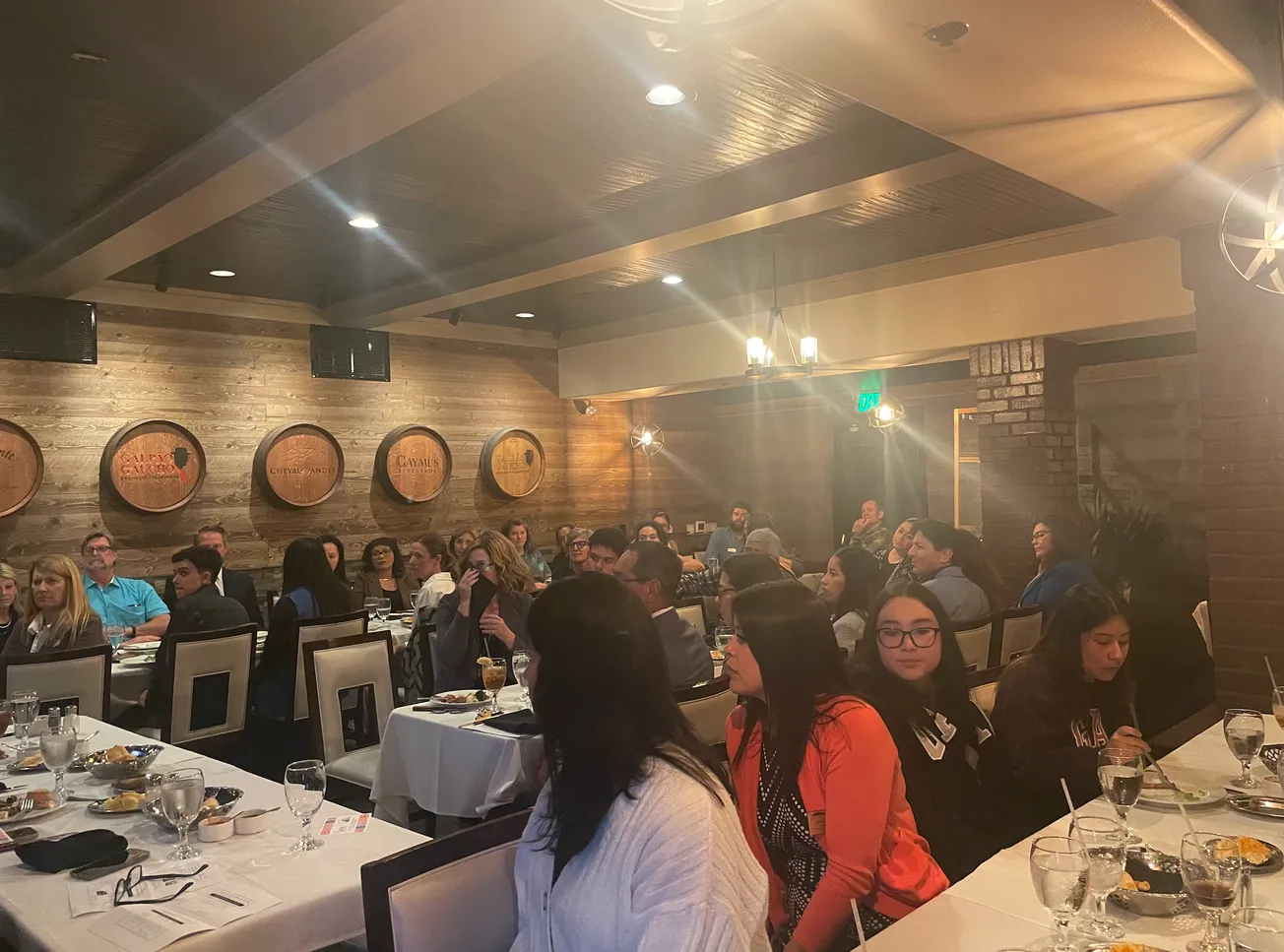The Latino Leaders Round Table, a monthly collaborative effort with the Napa County Hispanic Chamber of Commerce, brings together politicians, educators, entrepreneurs and healthcare officials to discuss the most pressing issues facing Napa County. This month, immigration was the topic of discourse.
At a sold-out lunch at the Galpão Gaucho Brazilian Steakhouse in Napa, on Friday, community members, including students invited by sponsors, faced the panel: Christopher Kerosky, civil immigration lawyer, Madeline Hernandez, from the Institute of the Bay Area, and Terence P. Mulligan, president of Napa Valley Community Foundation.
During the hour-long Q&A, lawyer Kerosky began: “Anyone here who services or knows DACA recipients should encourage them to look into advance parole.” This is a type of permission noncitizens receive to reenter the U.S. after traveling abroad.
“It’s an election year,” continued Kerosky, who is ranked in the top 1 percent of immigration lawyers nationwide. Over my 40 years, I have seen how everything is at stake for our communities, now more than ever, as the current administration stays or goes.”
The previous administration tried to end DACA, a government relief that protects eligible immigrants who came to the United States when they were children from deportation. But, the U.S. Supreme Court's 5-4 vote ruled in favor of DREAMers, upholding DACA.
Every month, about 20 people in the county become neutralized citizens, said Hernandez, who provides legal assistance and representation to vulnerable communities.
Napa County’s population is 23 percent foreign-born, about average in the Bay area but below the statewide average, according to the 2012 “Profile of Immigrants in Napa County.”
Citing this work, Terence Mulligan said, “Our immigrant community contributes enormously to economic growth here in the valley. Without their contribution to our local economies, we would drown in the ocean.”
Napa County’s estimated GDP was about $7.18 billion in 2009, according to the latest 2012 study on the immigrant population in the county. The study revealed that immigrants contributed (on an upper-bound) more than $1 billion to the total GDP. The total percentage of immigrants in the county has increased by approximately 150 percent since 1990.
Local nonprofits and service providers such as Puertas Abiertas, which focuses on providing aid to Latino families in Napa, Kaiser Permanente, and COPE, a family resource center with a focus on parent support, shared their appreciation for cross-collaboration and support. “We want to thank the foundation for supporting our resource center that primarily services Latino communities,” Blanca Huijon, executive director of Puertas Abiertas, said.
Local agencies that provide immigration assistance have about a two-month initial intake wait, Hernandez said, but the process can be sped up. “We can sometimes hold one-day clinics when we are working with either a church or groups that need aid. This is faster than having 50 different people set up different appointments,” she added.
Given the complexities and constant change of immigration laws based on past, current and future administrations, it is important that each person seek their own legal counsel for individualized guidance, according to panelists.
The next Latino Leaders Round Table on May 10th will feature Congressman Mike Thompson. No other details were shared.








